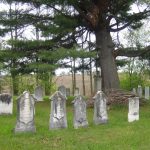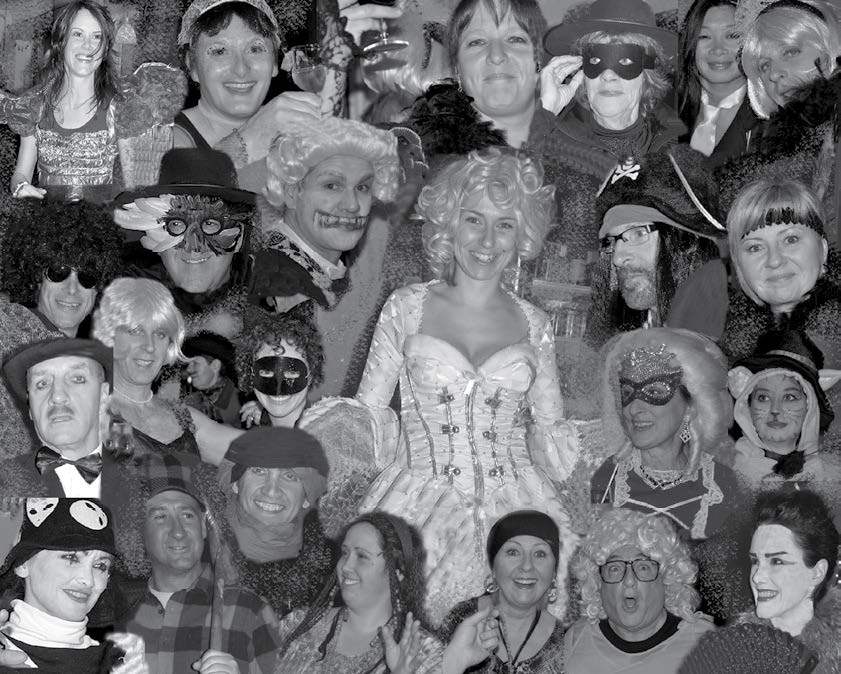May Smith (photo : Ketari Charbonneau)
Le Journal sat down recently with Mrs. May Smith at her apartment at le Manoir Philipsburg to learn about her family history and about the Philipsburg she has known for ninety years.
May was born on Tupper Street in Montreal. When she was six, her father, Arthur Grevatt, came to work for Mr. Tommy Allen at the marble quarry. May was one of four boys and four girls raised by Arthur and Lillian Grevatt in Philipsburg. Her brothers and sisters were Harold, Gladys, Bert, Marguerite, Edna, Jimmy and Frank.
The Grevatt’s first Philipsburg home was the quarry-owned house on the lakeshore next to the quarry’s pumphouse. The pump-house still stands at the corner of Champlain and Notre-Dame.
The quarry operations required a water supply in excess of what could be pumped from wells so the operators installed an aqueduct from the lake. Near the fire station, you can still see the mound of rock which covered the pipe where it ascends the steep hill through the woods on its way up to Allan Street.
This pumphouse supplied the village water system until the 1960’s when the Town of Bedford built their waterworks. The water was untreated. Every family made their own arrangements to draw water from their own well or from a neighbour. There was no electricity in most homes when the Grevatts first moved here. Refrigeration was from ice blocks that had been cut from the lake in midwinter and stored in ice-houses insulated with sawdust.
May remembers the railway line which ran from Stanbridge Station to the quarry for hauling finished marble to construction sites across the country. A branch of this same line led into the village towards the dock. May cannot remember this line ever in use. The dock in her youth never served any commercial purpose but she suspects it was useful for those engaged in smuggling. The dock was a wooden structure on wood pilings. It was a favorite location for swimming and fishing.
A village favorite, old Tom Smith, lived in a small house at the base of the dock, the site of the current pour-voyeur.
What is now a vacant building next door to the current bistro (8e Ciel) was at one time a popular dance hall known as the Overwater Pavilion. It was built on wooden piles and extended over the water beyond the shoreline which was quite close to the road. The whole area was filled around the time the Bedford waterworks were built.
The house now owned by Stephan Blais had a drugstore on the ground floor.
On the south side of the main street (now Montgomery) was the customs house. It was not unusual that a customs house be in whatever town was near the border, rather than right at the border itself.
Opposite the customs house was Roy’s store. Sid’s sister Marion worked at the post office counter in this store. Later, the post office was relocated to the ground floor of Mr. Roy’s house next door. Hugh and Laura Symington used to live above Roy’s store. Apart from Mr. Roy’s store there was Landry’s store at the corner of South Street and Lusignan’s on Philips.
Hotels – there were three : Gallaghers, the Champlain House and one May knew as Paquette’s. Paquette’s was later converted to the convent which is now le Manoir Philipsburg. There were two banks.
As a child in Philipsburg in the 1920’s, there was seldom need to go to Bedford. You went to school right in the community. There was even an ice cream parlour.
For medical care you went to see Dr. Tom Montgomery whose office was in the front of his house on what is now Allan Street (now owned by Guy Quesnel). May remembers the standard fee was 50 cents per visit. She was friends with the Montgomery children.
On Sundays in the summer, the family went in the family Ford to the beach at Venice for a picnic.
In the era before automobiles came into use, every- one walked. Horses were found on farms as draft animals. Horseback riding was only for those who could afford to keep horses or were in the haulage business.
A trip to Montreal meant taking the train from Saint Armand to the Bonaventure Station.
May remembers the blockhouse which stood a little behind what is now the Macfarlane family home. It was on the farm owned by Fred Kay who was member of parliament for Missisquoi and a minister in the federal cabinet. Not far from the the Kay house (now the property of Marielle Germain) was the Kay orchard of plum and apple trees. A favorite variety was Saint Lawrence apple.
May does not recall Prohibition days as being particularly wild in Philipsburg, even though we are so close to the American border.
The village did have a policeman on duty from time to time and there was indeed a jail cell in the Whitwell Hall.
Roads were not paved. The sidewalks were of wooden planks and a ditch separated the sidewalk from the road.
In 1940 May Grevatt married Sid Smith of Philipsburg, one of the seven children of James Smith. The others were Stanley, Patrick, Arthur, Marion, Evelyn and Therese. Sid first worked at the quarry but later moved to Montreal where he spent thirty-six years at Northern Electric in Lachine. The family returned regularly for family visits and summer holidays at their home on the Saint Armand Road, right next door to the Smith family home where Sid’s sisters Marion and Evelyn still live. When Sid retired, he and May returned to live full time in Philipsburg. Sid was a talented painter, a hunter and fisherman. Sid died in 2008.
Sid and May had two children : a son in Australia and a daughter in Edmonton. May has been to Australia five times. She has six great grandchildren but has never seen the four in Australia.
For May, Philipsburg is her contentment.
Autres articles
Laisser un commentaire
Nous n’acceptons pas les commentaires anonymes et vous devez fournir une adresse de courriel valide pour publier un commentaire. Afin d’assumer notre responsabilité en tant qu’éditeurs, tous les commentaires sont modérés avant publication afin de nous assurer du respect de la nétiquette et ne pas laisser libre cours aux trolls. Cela pourrait donc prendre un certain temps avant que votre commentaire soit publié sur le site.
Laisser un commentaire
Avez-vous lu?
- Christian Marcotte : entre culture… et culture
- Les Gosselin de Notre-Dame
- Falardeau, l’homme révolté
- Les frères Edson, des personnalités à redécouvrir
- Apprendre… et aller plus loin
- J.A. Fortin, photographe à Bedford
- Guy Dufresne, le poète de Frelighsburg
- Guy Dufresne
- Le parcours atypique d’Ananda et de Mikala
- Aux 2 clochers

















I am Ellen Perry from the states. My mom and dad are Hill and Bunty Perry. Could you please tell me what year Jim Smith died. He was .my grandfather and Hill’s stepfather